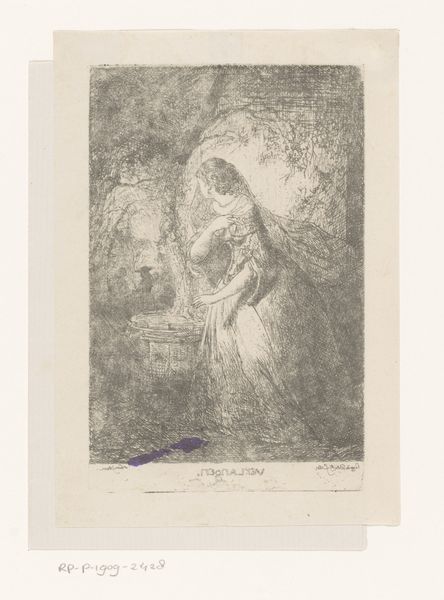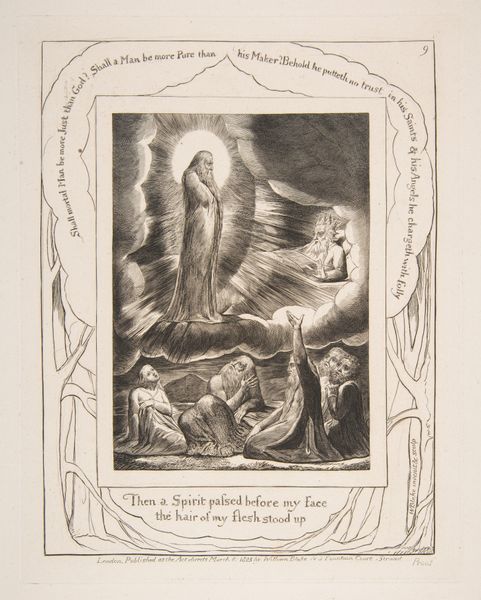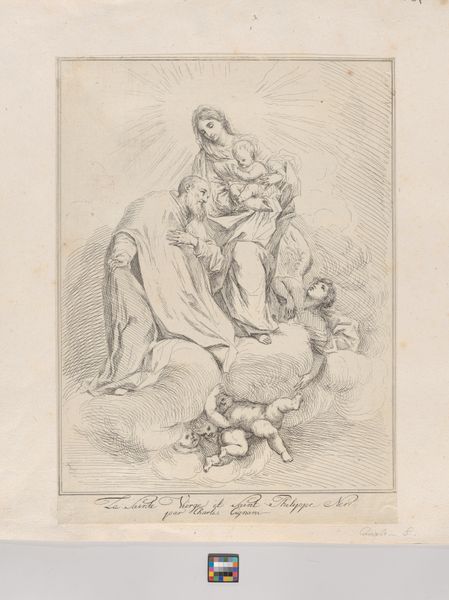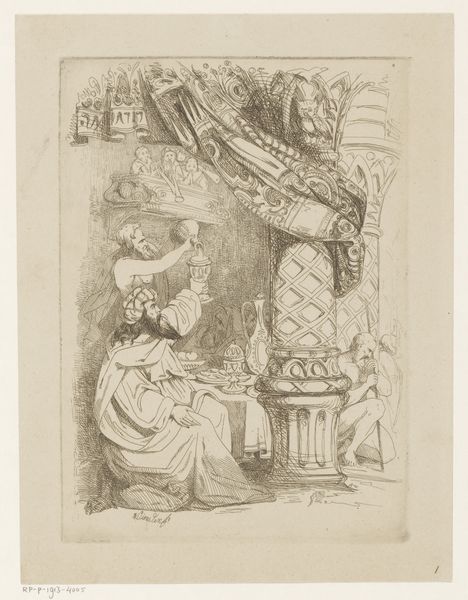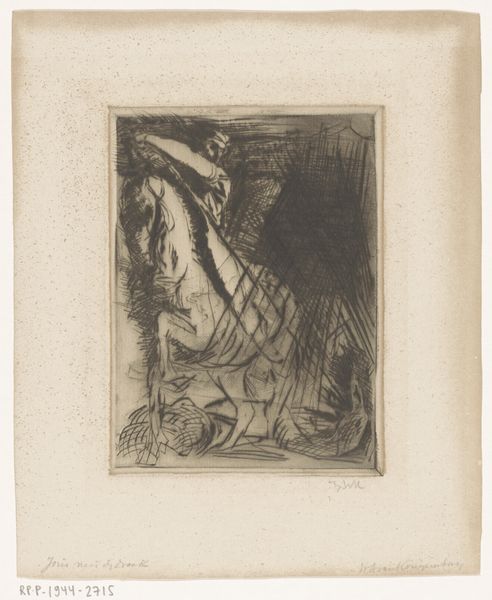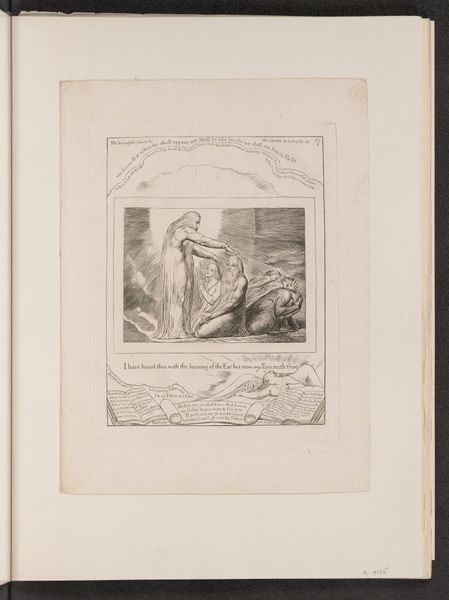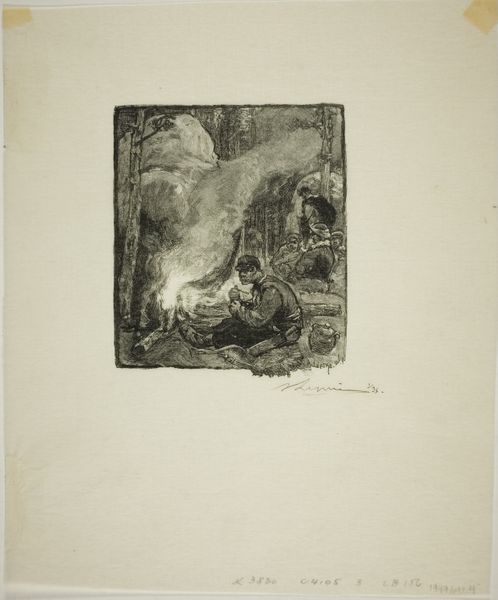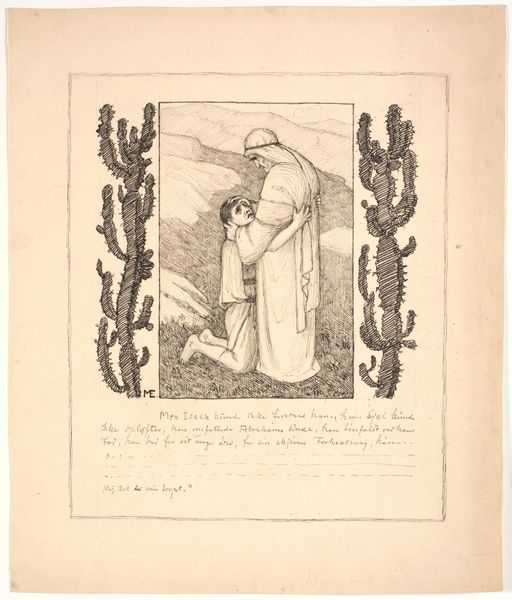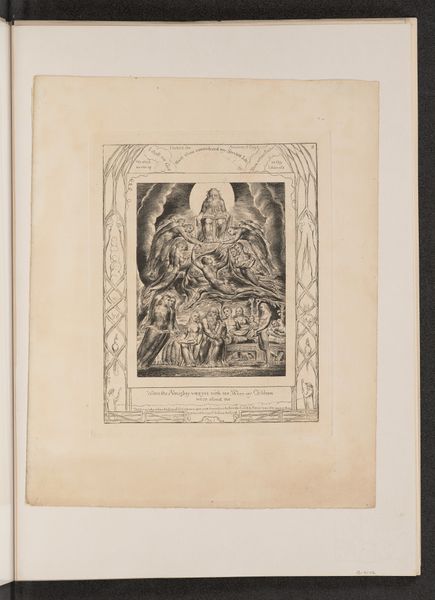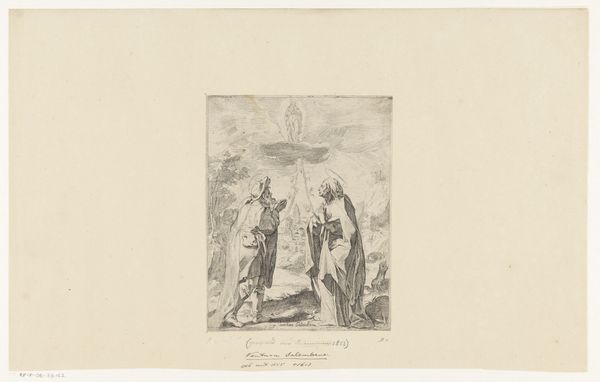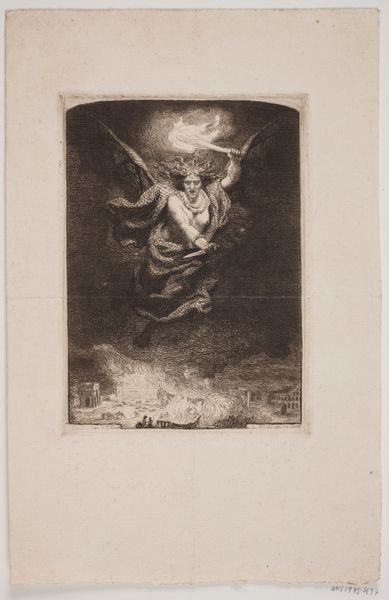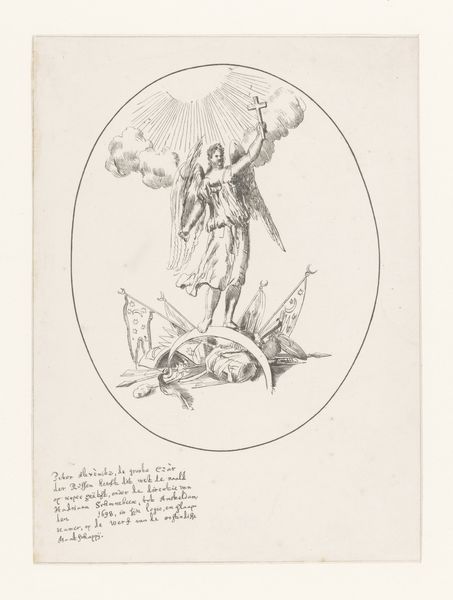
drawing, print, pencil, engraving
#
drawing
#
narrative-art
# print
#
figuration
#
pencil drawing
#
romanticism
#
pencil
#
line
#
history-painting
#
engraving
Copyright: National Gallery of Art: CC0 1.0
Editor: Here we have William Blake’s "The Vision of Eliphaz," made in 1825 using pencil and engraving. There’s something spectral about the scene, these figures cowering before a radiant, towering form. What symbolic language is at play here? Curator: Blake uses the visual vocabulary of revelation. The radiant figure immediately evokes spiritual authority, doesn't it? Notice the huddled figures—they embody fear and awe. Consider, too, the tradition of depicting divine encounters. Editor: Yes, the light source definitely suggests divinity, and the figures are reacting to some sort of biblical event. What could be an example of traditions involving depictions of divine encounters? Curator: Think of Renaissance Annunciation scenes, or even earlier Byzantine icons. Light, posture, and spatial relationships create a visual hierarchy, dictating how we’re meant to understand power and truth. How does Blake diverge, or perhaps subvert, these established symbols? Is he truly celebrating the divine, or critiquing it? The words "Then a spirit passed before my face" give us another clue, hinting at terror and the unknown. Editor: It makes you wonder about the context surrounding the creation of this work; maybe Blake sought to tap into these emotions? Curator: Exactly. Symbols are not static, they are living things! They are infused with a culture's hopes, fears, and memories. A symbol of salvation can become a symbol of oppression over time, and Blake was keenly aware of the potential for this sort of transformation. Considering it this way helps us move beyond simple interpretation into a richer understanding of visual communication. Editor: This makes me look at the image in an entirely different light—the play of symbols opens up multiple avenues of thought and meaning. Curator: Precisely. Engaging with art means deciphering these codes, exploring their evolution, and understanding their continued relevance to our present moment.
Comments
No comments
Be the first to comment and join the conversation on the ultimate creative platform.
